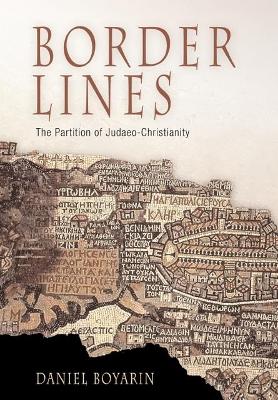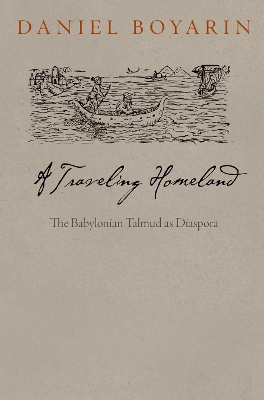Divinations: Rereading Late Ancient Religion
2 total works
The historical separation between Judaism and Christianity is often figured as a clearly defined break of a single entity into two separate religions. Following this model, there would have been one religion known as Judaism before the birth of Christ, which then took on a hybrid identity. Even before its subsequent division, certain beliefs and practices of this composite would have been identifiable as Christian or Jewish.In Border Lines, however, Daniel Boyarin makes a striking case for a very different way of thinking about the historical development that is the partition of Judaeo-Christianity.
There were no characteristics or features that could be described as uniquely Jewish or Christian in late antiquity, Boyarin argues. Rather, Jesus-following Jews and Jews who did not follow Jesus lived on a cultural map in which beliefs, such as that in a second divine being, and practices, such as keeping kosher or maintaining the Sabbath, were widely and variably distributed. The ultimate distinctions between Judaism and Christianity were imposed from above by "border-makers," heresiologists anxious to construct a discrete identity for Christianity. By defining some beliefs and practices as Christian and others as Jewish or heretical, they moved ideas, behaviors, and people to one side or another of an artificial border—and, Boyarin significantly contends, invented the very notion of religion.
A word conventionally imbued with melancholy meanings, "diaspora" has been used variously to describe the cataclysmic historical event of displacement, the subsequent geographical scattering of peoples, or the conditions of alienation abroad and yearning for an ancestral home. But as Daniel Boyarin writes, diaspora may be more constructively construed as a form of cultural hybridity or a mode of analysis. In A Traveling Homeland, he makes the case that a shared homeland or past and traumatic dissociation are not necessary conditions for diaspora and that Jews carry their homeland with them in diaspora, in the form of textual, interpretive communities built around talmudic study.
For Boyarin, the Babylonian Talmud is a diasporist manifesto, a text that produces and defines the practices that constitute Jewish diasporic identity. Boyarin examines the ways the Babylonian Talmud imagines its own community and sense of homeland, and he shows how talmudic commentaries from the medieval and early modern periods also produce a doubled cultural identity. He links the ongoing productivity of this bifocal cultural vision to the nature of the book: as the physical text moved between different times and places, the methods of its study developed through contact with surrounding cultures. Ultimately, A Traveling Homeland envisions talmudic study as the center of a shared Jewish identity and a distinctive feature of the Jewish diaspora that defines it as a thing apart from other cultural migrations.

